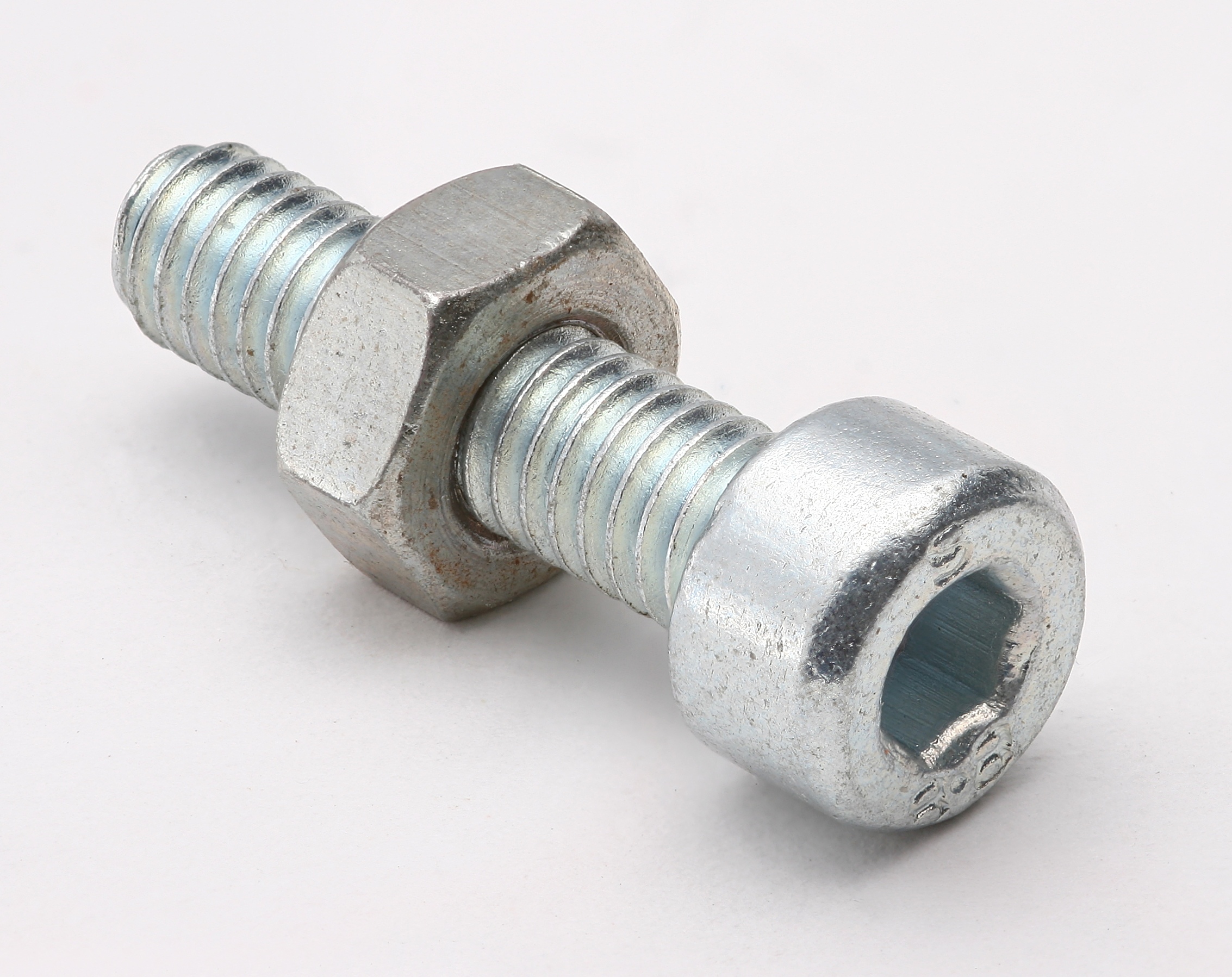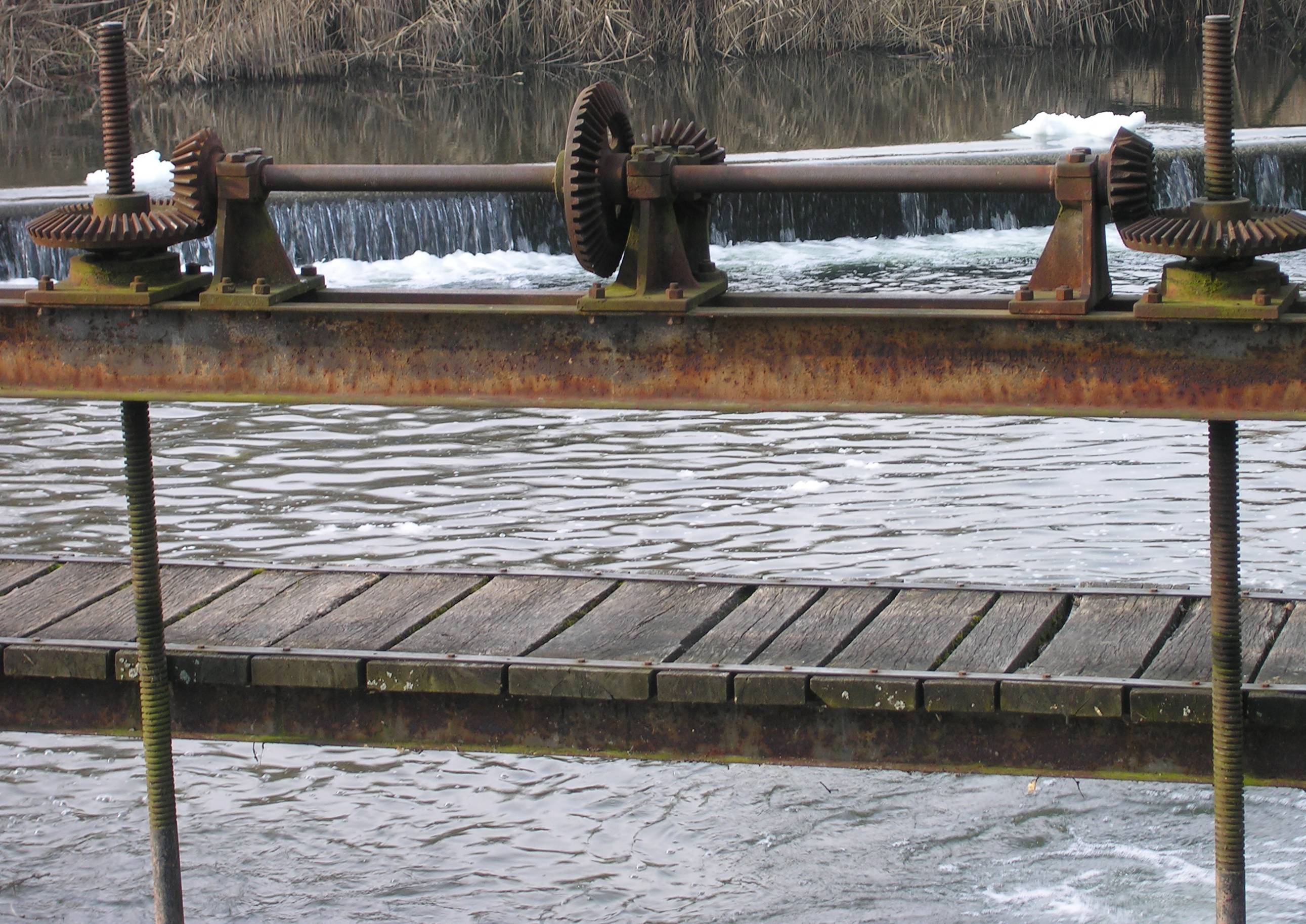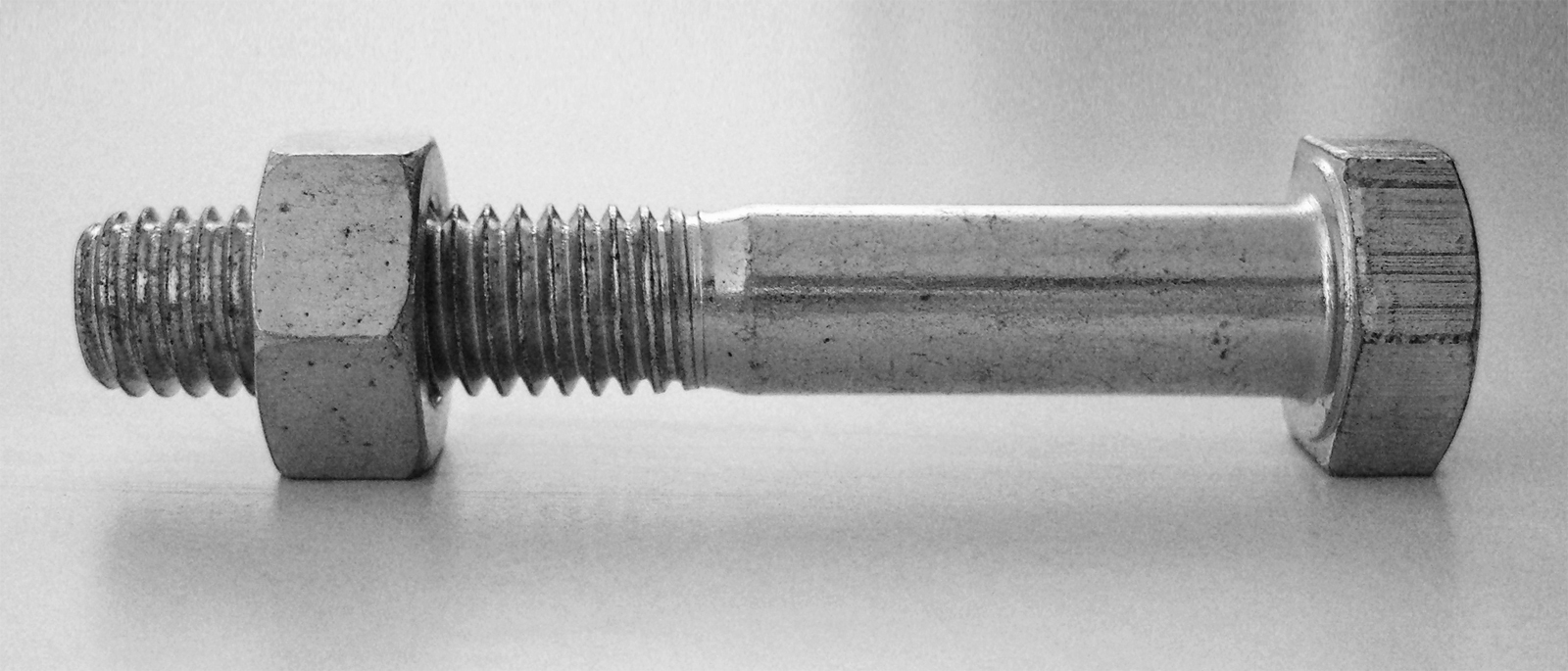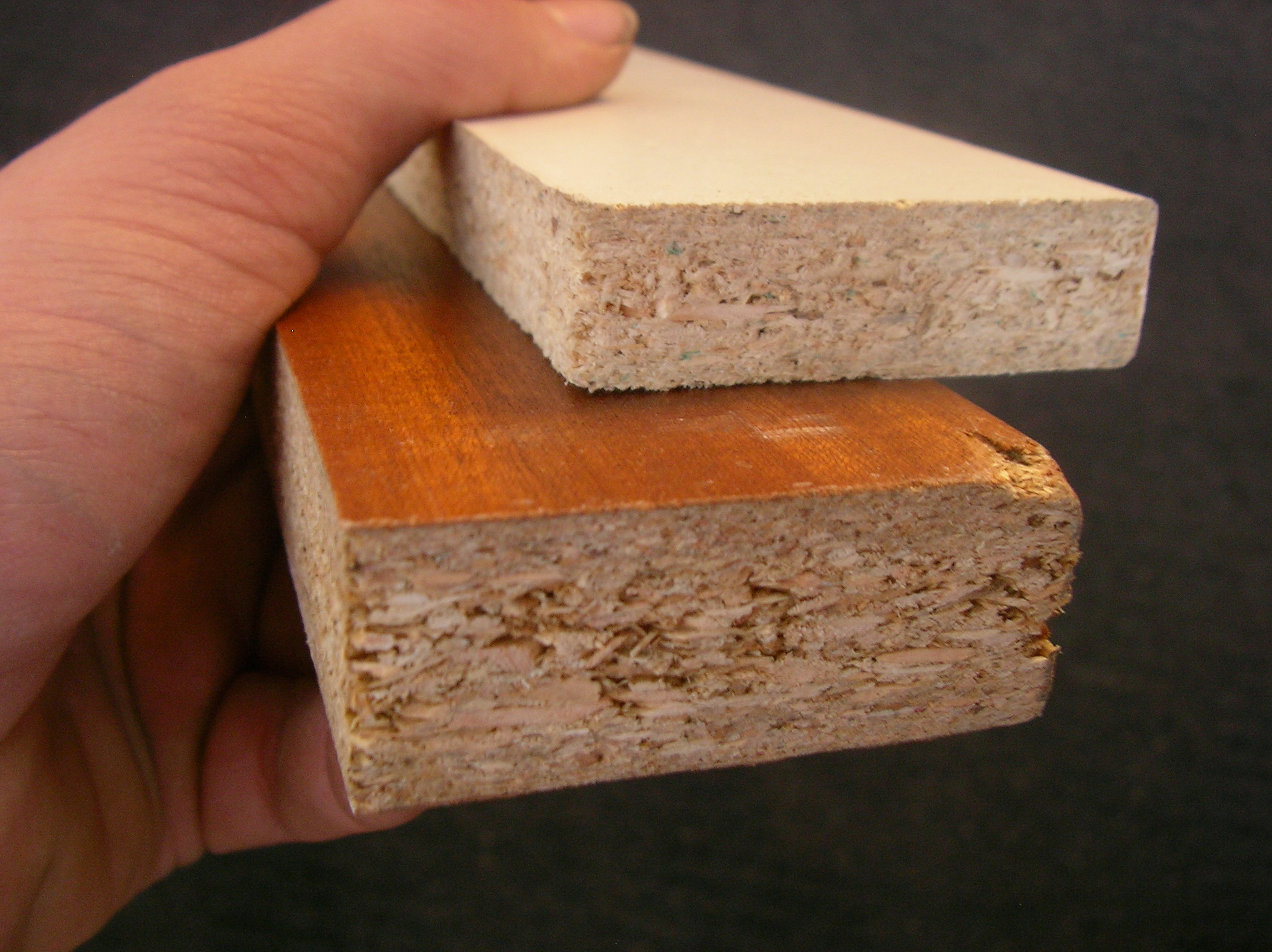|
Barrel Nut
:''On some firearms the gun barrel is fastened to the receiver with a nut, referred to as a barrel nut.'' A barrel nut (also known as steel cross dowel or dowel nut) is a specialized forged nut, and is commonly used in aerospace and ready-to-assemble furniture applications. It is used to bolt thin sheet metal parts to larger, often billet or forged, parts. The barrel nut is a round slug, or formed sheet metal part with threads perpendicular to the length of the nut. The nut sits in a hole inside the forging and a standard bolt is threaded into the barrel nut from outside the sheet metal. They are preferred over a standard nut and bolt, because they do not require a flange to be machined or forged onto the receiving part, thus reducing weight. Furniture cross dowel barrel nuts are cylindrical shaped metal nuts (metal dowels) used with furniture connector bolts to join two pieces of wood. The inside threaded hole is unusual in that it passes through the sides of the dowel. To i ... [...More Info...] [...Related Items...] OR: [Wikipedia] [Google] [Baidu] |
Gun Barrel
A gun barrel is a crucial part of gun-type weapons such as small firearms, artillery pieces, and air guns. It is the straight shooting tube, usually made of rigid high-strength metal, through which a contained rapid expansion of high-pressure gas(es) is used to propel a projectile out of the front end ( muzzle) at a high velocity. The hollow interior of the barrel is called the bore, and the diameter of the bore is called its caliber, usually measured in inches or millimetres. The first firearms were made at a time when metallurgy was not advanced enough to cast tubes capable of withstanding the explosive forces of early cannons, so the pipe (often built from staves of metal) needed to be braced periodically along its length for structural reinforcement, producing an appearance somewhat reminiscent of storage barrels being stacked together, hence the English name.''A History of Warfare'' - Keegan, John, Vintage 1993. History Gun barrels are usually metal. However, the e ... [...More Info...] [...Related Items...] OR: [Wikipedia] [Google] [Baidu] |
Nut (hardware)
A nut is a type of fastener with a screw thread, threaded hole. Nuts are almost always used in conjunction with a mating bolt (fastener), bolt to fasten multiple parts together. The two partners are kept together by a combination of their threads' friction (with slight deformation (engineering)#Elastic deformation, elastic deformation), a slight Tension (physics), stretching of the bolt, and compression (physics), compression of the parts to be held together. In applications where vibration or rotation may work a nut loose, various locking mechanisms may be employed: lock washers, jam nuts, eccentric double nuts, specialist adhesive thread-locking fluid such as Loctite, safety pins (split pins) or lockwire in conjunction with castellated nuts, nylon inserts (nyloc nut), or slightly oval-shaped threads. Square nuts, as well as bolt heads, were the first shape made and used to be the most common largely because they were much easier to manufacture, especially by hand. While rare to ... [...More Info...] [...Related Items...] OR: [Wikipedia] [Google] [Baidu] |
Aerospace
Aerospace is a term used to collectively refer to the atmosphere and outer space. Aerospace activity is very diverse, with a multitude of commercial, industrial and military applications. Aerospace engineering consists of aeronautics and astronautics. Aerospace organizations research, design, manufacture, operate, or maintain both aircraft and spacecraft. The beginning of space and the ending of the air is considered as 100 km (62 mi) above the ground according to the physical explanation that the air pressure is too low for a lifting body to generate meaningful lift force without exceeding orbital velocity. Overview In most industrial countries, the aerospace industry is a cooperation of the public and private sectors. For example, several states have a civilian space program funded by the government, such as NASA, National Aeronautics and Space Administration in the United States, European Space Agency in Europe, the Canadian Space Agency in Canada, Indian Space Re ... [...More Info...] [...Related Items...] OR: [Wikipedia] [Google] [Baidu] |
Ready-to-assemble Furniture
Ready-to-assemble furniture (RTA), also known as knock-down furniture (KD), flat pack furniture, or kit furniture, is a form of furniture that requires customer assembly. The separate components are packed for sale in cartons which also contain assembly instructions and sometimes hardware. The furniture is generally simple to assemble with basic tools such as screwdrivers, which are also sometimes included. Ready-to-assemble furniture is popular with consumers who wish to save money by assembling the product themselves. Producers and merchants benefit from selling ready-to-assemble furniture because furniture is bulky once assembled, and thus more expensive to store and to deliver. Since the assembly work is done by the consumer instead of by the manufacturer, its price can be lower. A furniture assembly service industry has developed, making it easy for consumers to employ someone knowledgeable to assemble their furniture for them. Produced mainly from chipboard or medium den ... [...More Info...] [...Related Items...] OR: [Wikipedia] [Google] [Baidu] |
Sheet Metal
Sheet metal is metal formed into thin, flat pieces, usually by an industrial process. Sheet metal is one of the fundamental forms used in metalworking, and it can be cut and bent into a variety of shapes. Thicknesses can vary significantly; extremely thin sheets are considered foil or leaf, and pieces thicker than 6 mm (0.25 in) are considered plate, such as plate steel, a class of structural steel. Sheet metal is available in flat pieces or coiled strips. The coils are formed by running a continuous sheet of metal through a roll slitter. In most of the world, sheet metal thickness is consistently specified in millimeters. In the U.S., the thickness of sheet metal is commonly specified by a traditional, non-linear measure known as its gauge. The larger the gauge number, the thinner the metal. Commonly used steel sheet metal ranges from 30 gauge to about 7 gauge. Gauge differs between ferrous ( iron-based) metals and nonferrous metals such as aluminum or copper. Cop ... [...More Info...] [...Related Items...] OR: [Wikipedia] [Google] [Baidu] |
Bar Stock
Bar stock, also (colloquially) known as blank, slug or billet, is a common form of raw purified metal, used by industry to manufacture metal parts and products. Bar stock is available in a variety of extrusion shapes and lengths. The most common shapes are round (circular cross-section), rectangular, square and hexagonal. A bar is characterised by an "enclosed invariant convex cross-section", meaning that pipes, angle stock and objects with varying diameter are not considered bar stock. Bar stock is commonly processed by a sequence of sawing, turning, milling, drilling and grinding to produce a final product, often vastly different from the original stock. In some cases, the process is partially automated by specialized equipment which feeds the stock into the appropriate processing machine. Process and types Most metal produced by a steel mill or aluminium plant is formed (via rolling or extrusion) into long continuous strips of various size and shape. These strips are cut ... [...More Info...] [...Related Items...] OR: [Wikipedia] [Google] [Baidu] |
Forging
Forging is a manufacturing process involving the shaping of metal using localized compressive forces. The blows are delivered with a hammer (often a power hammer) or a die. Forging is often classified according to the temperature at which it is performed: cold forging (a type of cold working), warm forging, or hot forging (a type of hot working). For the latter two, the metal is heated, usually in a forge. Forged parts can range in weight from less than a kilogram to hundreds of metric tons.Degarmo, p. 389 Forging has been done by smiths for millennia; the traditional products were kitchenware, hardware, hand tools, edged weapons, cymbals, and jewellery. Since the Industrial Revolution, forged parts are widely used in mechanisms and machines wherever a component requires high strength; such forgings usually require further processing (such as machining) to achieve a finished part. Today, forging is a major worldwide industry. History Forging is one of the oldest known me ... [...More Info...] [...Related Items...] OR: [Wikipedia] [Google] [Baidu] |
Screw Thread
A screw thread, often shortened to thread, is a helical structure used to convert between rotational and linear movement or force. A screw thread is a ridge wrapped around a cylinder or cone in the form of a helix, with the former being called a ''straight'' thread and the latter called a ''tapered'' thread. A screw thread is the essential feature of the screw as a simple machine and also as a threaded fastener. The mechanical advantage of a screw thread depends on its ''lead'', which is the linear distance the screw travels in one revolution. In most applications, the lead of a screw thread is chosen so that friction is sufficient to prevent linear motion being converted to rotary, that is so the screw does not slip even when linear force is applied, as long as no external rotational force is present. This characteristic is essential to the vast majority of its uses. The tightening of a fastener's screw thread is comparable to driving a wedge into a gap until it sticks fast thro ... [...More Info...] [...Related Items...] OR: [Wikipedia] [Google] [Baidu] |
Bolt (fastener)
A bolt is a form of threaded fastener with an external male thread requiring a matching pre-formed female thread such as a nut. Bolts are very closely related to screws. Bolts vs. screws The distinction between a bolt and a screw is poorly-defined. The academic distinction, per ''Machinery's Handbook'', is in their intended design: bolts are designed to pass through an unthreaded hole in a component and be fastened with the aid of a nut, although such a fastener can be used without a nut to tighten into a threaded component such as a nut-plate or tapped housing. Screws in contrast are used in components which contain their own thread, or to cut its own internal thread into them. This definition allows ambiguity in the description of a fastener depending on the application it is actually used for, and the terms screw and bolt are widely used by different people or in different countries to apply to the same or varying fastener. Bolts are often used to make a bolted joint. T ... [...More Info...] [...Related Items...] OR: [Wikipedia] [Google] [Baidu] |
Flat-pack
Ready-to-assemble furniture (RTA), also known as knock-down furniture (KD), flat pack furniture, or kit furniture, is a form of furniture that requires customer assembly. The separate components are packed for sale in cartons which also contain assembly instructions and sometimes hardware. The furniture is generally simple to assemble with basic tools such as screwdrivers, which are also sometimes included. Ready-to-assemble furniture is popular with consumers who wish to save money by assembling the product themselves. Producers and merchants benefit from selling ready-to-assemble furniture because furniture is bulky once assembled, and thus more expensive to store and to deliver. Since the assembly work is done by the consumer instead of by the manufacturer, its price can be lower. A furniture assembly service industry has developed, making it easy for consumers to employ someone knowledgeable to assemble their furniture for them. Produced mainly from chipboard or medium den ... [...More Info...] [...Related Items...] OR: [Wikipedia] [Google] [Baidu] |
Particle Board
Particle board, also known as chipboard or low-density fiberboard, is an engineered wood product manufactured from wood chips and a synthetic resin or other suitable binder, which is pressed and extruded. Particle board is often confused with oriented strand board (OSB) (also known as flakeboard, or waferboard), a different type of fiberboard that uses machined wood flakes and offers more strength. Characteristics Particle board is cheaper, denser and more uniform than conventional wood and plywood and is substituted for them when cost is more important than strength and appearance. Particleboard can be made more appealing by painting or the use of wood veneers on visible surfaces. Though it is denser than conventional wood, it is the lightest and weakest type of fiberboard, except for insulation board. Medium-density fibreboard and hardboard, also called high-density fiberboard, are stronger and denser than particleboard. Different grades of particleboard have different densi ... [...More Info...] [...Related Items...] OR: [Wikipedia] [Google] [Baidu] |




.jpg)





